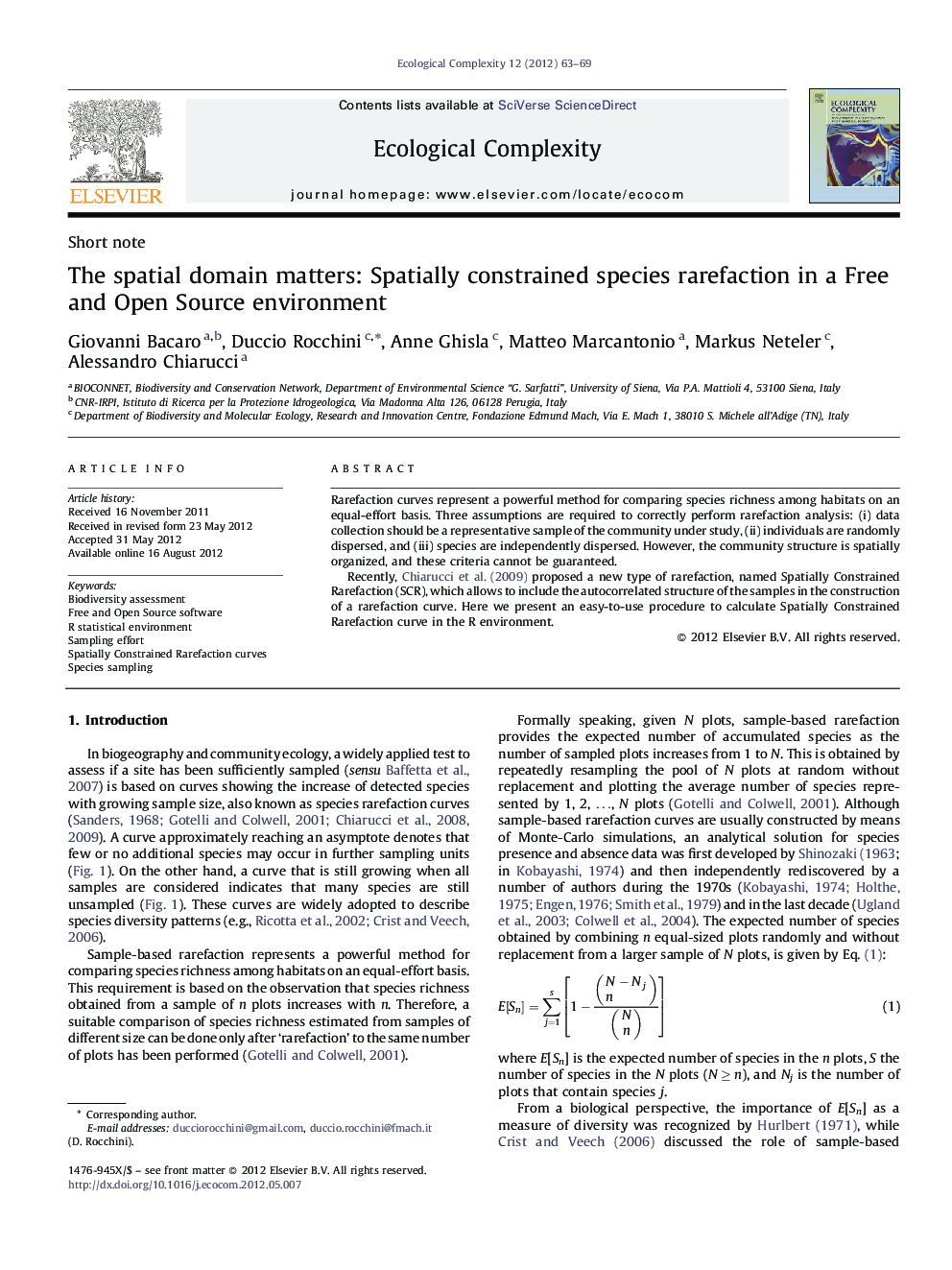| Article ID | Journal | Published Year | Pages | File Type |
|---|---|---|---|---|
| 4372530 | Ecological Complexity | 2012 | 7 Pages |
Rarefaction curves represent a powerful method for comparing species richness among habitats on an equal-effort basis. Three assumptions are required to correctly perform rarefaction analysis: (i) data collection should be a representative sample of the community under study, (ii) individuals are randomly dispersed, and (iii) species are independently dispersed. However, the community structure is spatially organized, and these criteria cannot be guaranteed.Recently, Chiarucci et al. (2009) proposed a new type of rarefaction, named Spatially Constrained Rarefaction (SCR), which allows to include the autocorrelated structure of the samples in the construction of a rarefaction curve. Here we present an easy-to-use procedure to calculate Spatially Constrained Rarefaction curve in the R environment.
► Rarefaction curves represent a powerful method for comparing species richness among habitats on an equal-effort basis. ► The code in R of a new method is proposed (Spatially Constrained Rarefaction – SCR). ► It allows to include the autocorrelated structure of the samples in the construction of a rarefaction curve.
